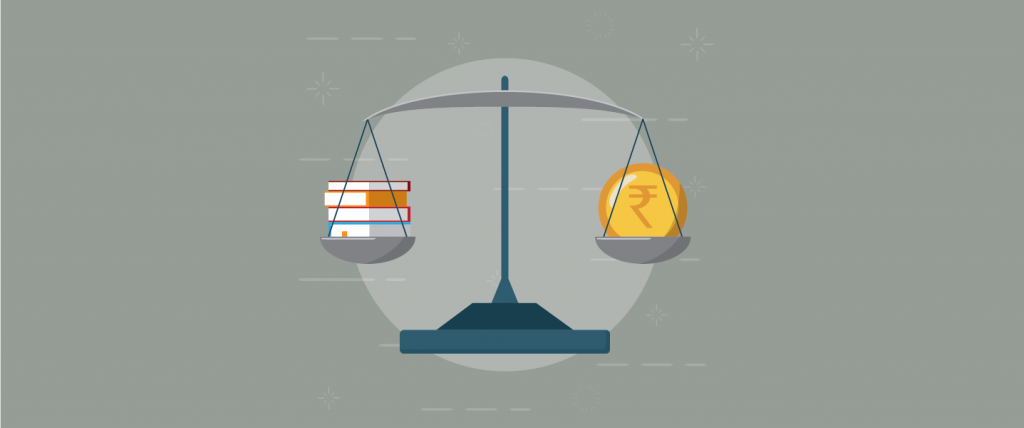Insights
‘Critical supplies’ under the insolvency and bankruptcy code, 2016
June 12, 2023A corporate insolvency resolution process (“CIRP“) under the Insolvency and Bankruptcy Code, 2016 (“Code“) involves a delicate balance between the interests of various stakeholders, which must be collectively aligned towards the revival of a corporate debtor. One category of such stakeholders is suppliers to the corporate debtor. The continuance of supplies to a corporate debtor may be the cornerstone to ensuring its continued existence and functioning as a going concern[1] , which ultimately ensures a better realization its creditors.[2] At the same time, a delicate balance must be built into an insolvency framework to adequately incentivize suppliers to support a corporate debtor in distress where payments may for goods and services may not be forthcoming.

-
Introduction of the concept of ‘critical supplies’ under the Code
The Code, from its inception provided protection to a corporate debtor as regards the supply of ‘essential goods and services’. This protection is couched under Section 14 (2) of the Code, which provides as under:
“(2) The supply of essential goods or services to the corporate debtor as may be specified shall not be terminated or suspended or interrupted during moratorium period.” [3]
The term ‘essential goods or services’ is highly limited in scope, covering solely electricity, water, telecommunication services, and information technology services, solely to the extent that such supplies do not constitute a direct input to the output produced or supplied by the corporate debtor.[4] Corresponding to this benefit of continued supply provided to the corporate debtor, amounts due to the suppliers of ‘essential goods or services’ are included within the definition of insolvency resolution process costs[5] and are accordingly required to be mandatorily paid in priority under a resolution plan in a CIRP[6] or out of the liquidation process of a corporate debtor as the case may be.[7]
Read More+
The extremely narrow scope of ‘essential goods or services’ and the specific exclusion of goods or supplies which are utilized as direct inputs to goods or services provided by a corporate debtor, posed serious concerns in CIRPs, as suppliers of necessary goods and services no matter how necessary such goods and services could be to the actual running of a corporate debtor as a going concern, could still proceed to terminate their supplies during the CIRP of a corporate debtor. Accordingly, the economic value associated with keeping a corporate debtor running as a going concern could often be depleted as a result of exercise of such contractual rights by suppliers of non-essential goods and services.
The need for introducing flexibility in the determination of ‘essential goods or services’ came to be noted in the report of the Insolvency Law Committee Report released in May 2018, wherein it was suggested that a resolution professional could make a suitable application before the jurisdictional National Company Law Tribunal (“NCLT“) for continuation of supply of essential goods or services other than as specified under the CIRP Regulations, and the NCLT take a decision on the determination of such supply based on the facts and circumstances of each case.[8]
Accordingly, this issue was discussed at length in the discussion paper on the corporate insolvency resolution process dated November 3, 2019 released by the Insolvency and Bankruptcy Board of India (“IBBI“), wherein it was recommended that a second category of essential services should be added to Regulation 32 of the CIRP Regulations, which shall be services considered as essential by the interim resolution professional/resolution professional for running a corporate debtor as a going concern. The supply of this second category of services would be subject to the condition that the corporate debtor pays for their current consumption during the CIRP.[9]
This was followed by the introduction of the concept of critical supplies under Section 14 (2A) of the Code vide the Insolvency and Bankruptcy Code (Amendment) Ordinance, 2019 (thereafter replaced by the Insolvency and Bankruptcy Code (Amendment) Act, 2020)). Section 14 (2A) of the Code provides as under:
“(2A) Where the interim resolution professional or resolution professional, as the case may be, considers the supply of goods or services critical to protect and preserve the value of the corporate debtor and manage the operations of such corporate debtor as a going concern, then the supply of such goods or services shall not be terminated, suspended or interrupted during the period of moratorium, except where such corporate debtor has not paid dues arising from such supply during the moratorium period or in such circumstances as may be specified.”
Accordingly, with the introduction of Section 14 (2A) of the Code, it is open for an interim resolution professional/resolution professional to determine that the supply of certain goods and services are critical to protect and preserve the value of a corporate debtor, and to manage its operations as a going concern, and then such supplies cannot be terminated unless there is non-payment of dues arising from such supply during the moratorium period.
-
Issues with the concept of ‘critical supplies’
(A) Lack of guidance on determination of ‘critical supplies’
Presently, Section 14 (2A) of the Code solely states that critical supplies can be considered as such if they are critical to (i) protect and preserve the value of a corporate debtor; and (ii) to manage its operations as a going concern. It is relevant to note these categories can cover an entire gamut of supplies, however, the Code does not provide any guidance on how a resolution professional/interim resolution professional may determine what is ‘critical’.
To ensure consistency in broad approaches across CIRPs, and to prevent uncertainty and confusion in the process of determination, it may be helpful to devise certain common tests to enable the easier determination of ‘criticality’. In fact, certain tests in this regard were suggested by the Insolvency Law Committee, 2020, as reproduced below:
“8.17. The supplies that would be considered critical should be identified by the resolution professional, who is entrusted with the responsibility of running the corporate debtor as a going concern. In identifying critical supplies, the resolution professional should consider factors such as whether the supplies have a significant and direct relationship with keeping the corporate debtor running as a going concern, and whether the supplies may be replaced easily or efficiently.”
Such broad principles may be formalized and should be made available to interim resolution professionals/resolution professionals to establish certain common practices for understanding the term criticality, which may of course thereafter be applied as per the facts and circumstances of each individual case. This could help create greater certainty in the determination of critical supplies. Further, such common principles could reduce the risk of determinations by resolution professionals being open for judicial challenge, thereby fulfilling the regulatory intent of behind affixing the role of determination of ‘criticality’ on the resolution professionals, rather than the NCLTs (as suggested originally by the Insolvency Law Committee in 2018), i.e., reducing the burden of the already overworked NCLT.[10]
Footnote
[1] The duty to maintain a corporate debtor as a going concern is imposed on the interim resolution professional, and thereafter on the resolution professional under Section 20 (1) read with Section 23 (2) of the Insolvency and Bankruptcy Code, 2016.
[2] Report of Bankruptcy Law Reforms Committee, at p. 15.
[3] Section 14 (2), Insolvency and Bankruptcy Code, 2016.
[4] Regulation 32, Insolvency and Bankruptcy Board of India (Insolvency Resolution Process for Corporate Persons) Regulations, 2016.
[5] Regulation 31 (1), Insolvency and Bankruptcy Board of India (Insolvency Resolution Process for Corporate Persons) Regulations, 2016.
[6] Section 30 (2)(a), Insolvency and Bankruptcy Code, 2016.
[7] Section 53 (1)(a), Insolvency and Bankruptcy Code, 2016.
[8] Report of Insolvency Law Committee, 2018, at para 5.14 and 5.15.
[9] Discussion paper on the Corporate Insolvency Resolution Process dated November 3, 2019, at para 19.
[10] Report of Insolvency Law Committee, 2020, at para 8.15.
This article was originally published in Mondaq on 12 June 2023 Co-written by: Anoop Rawat, Partner; Saurav Panda, Partner; Samidha Mathur, Associate. Click here for original article
Read Less-
Contributed by: Anoop Rawat, Partner; Saurav Panda, Partner; Samidha Mathur, Associate
Disclaimer
This is intended for general information purposes only. The views and opinions expressed in this article are those of the author/authors and does not necessarily reflect the views of the firm.



